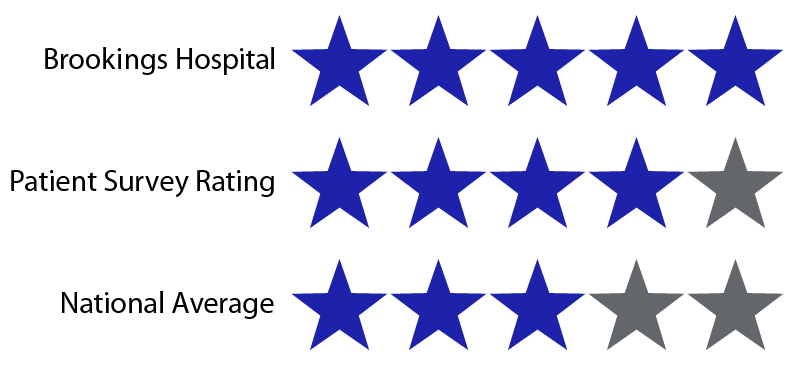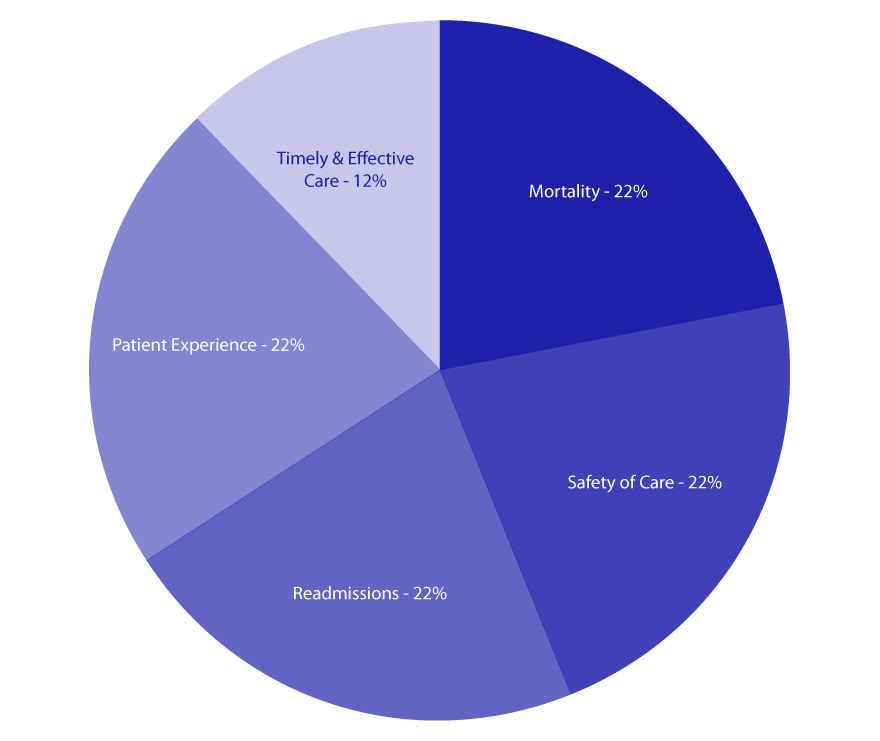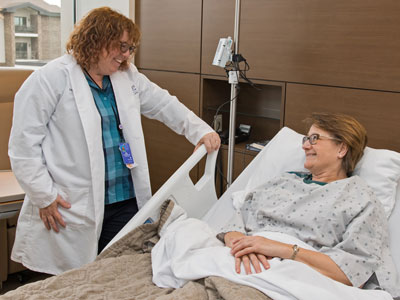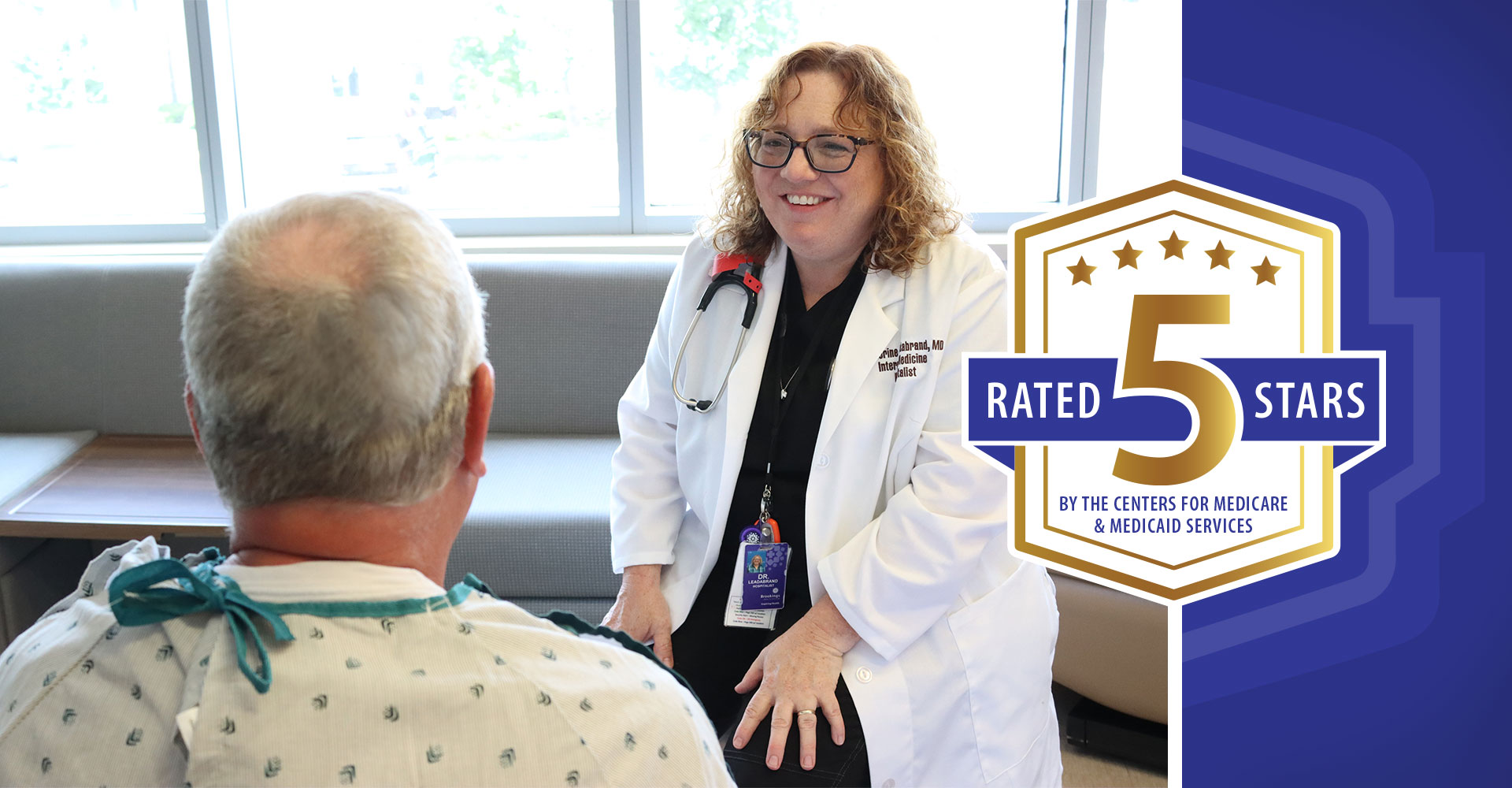Brookings Hospital
The key quality measures below have been chosen by Federal and state agencies as measurements of high quality medical care and reflect what is privately reported to Brookings Health by independent research firm NRC Health and publicly reported on the Care Compare website.

Overall Hospital Star Rating (data from January 2024 update)
Overall Patient Experience Rating
The table below shows the percentage of patients who rated us as being a 9 or 10 on a 10-point scale in overall patient experience according to the NRC Health Database (approximately 2,788 hospitals nationwide). Higher percentages are better. Data from January, 2023 - December, 2023.
| Service | Brookings Hospital | NRC Health Average |
|---|---|---|
| Emergency Department | 63.9% | 63.0% |
| Inpatient Care | 76.2% | 71.8% |
| Obstetrics | 85.7% | 71.8% |
| Surgery | 93.3% | 86.2% |
| Outpatient Testing (CT, X-ray, MRI, Ultrasound, Nuclear Medicine, Respiratory Care) | 77.0% | 81.2% |
Measures from Care Compare
- The information below shows how timely and effective care is at Brookings Hospital compared to state and national averages. Care Compare uses these measures to show how often hospitals provide care that research shows gets the best results for patients with certain conditions. More information on Brookings Hospital and other hospitals can be found on the Care Compare website. Data from April, 2022 - March, 2023.




